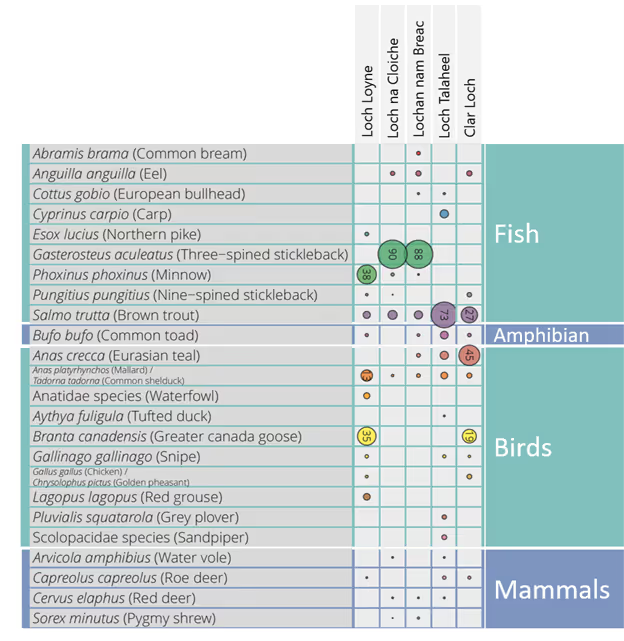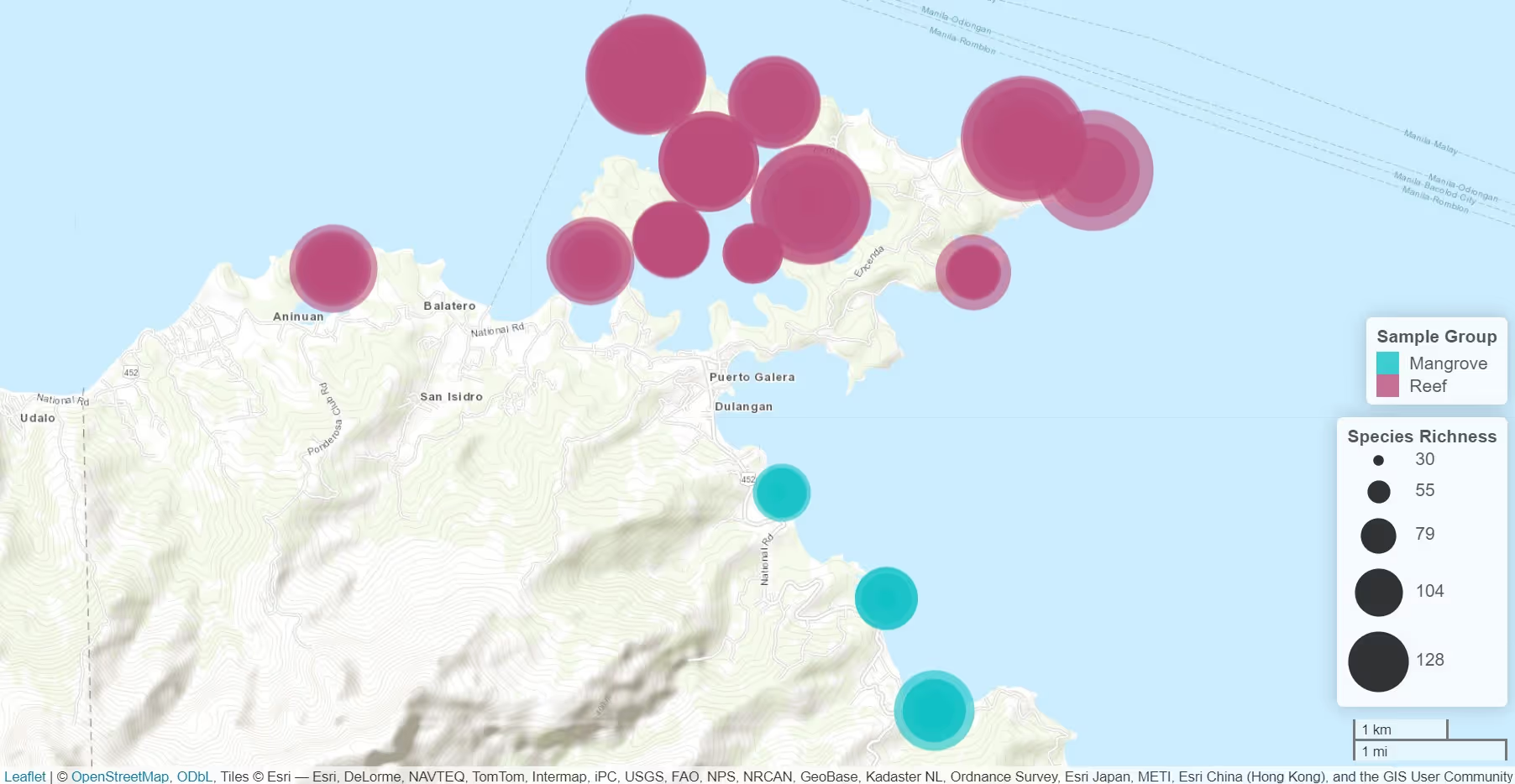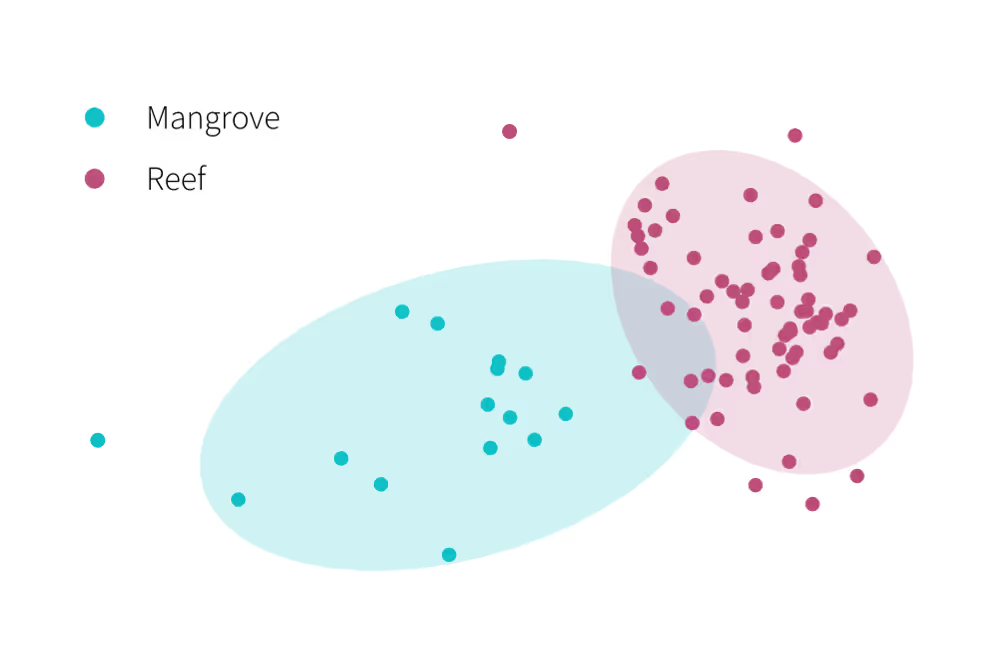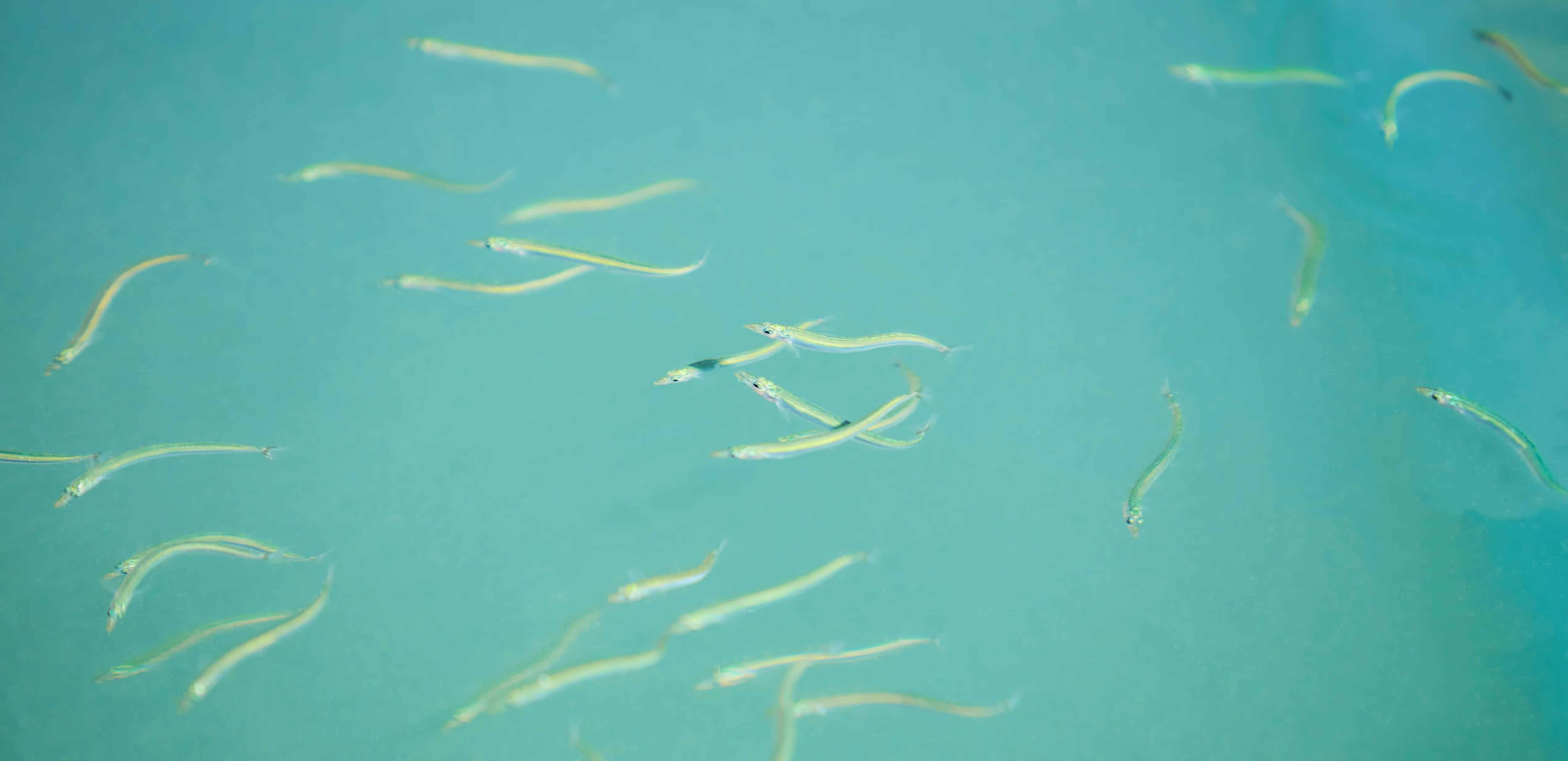RSPB Common Scoter & Trout project

A collaboration between
Project Snapshot
Overview
- RSBP Scotland collaborated with NatureMetrics to conduct a pilot eDNA study in five lochs.
- They aimed to better understand the ecology of Scottish lochs and their suitability as habitat for the Common Scoter, a rare duck species.
- Data highlighted ecological differences that influence the suitability of the lochs as habitat for the Common Scoter.

The Challenge
RSPB aimed to test whether eDNA could provide data to assess the habitat suitability of lochs for Common Scoter.
A few pairs of common scoter breed in the Scottish lochs each year. In some lochs, scoters compete with brown trout for invertebrate prey, but where small fish (e.g. minnows & sticklebacks) are present the trout feed on these and competition with the scoters is reduced.
This project aimed to test the ability of eDNA to characterise fish communities with a particular focus on the presence of trout and small fish species, in order to predict competition pressure for the common scoter. We did not expect to detect the scoter itself since sampling took place outside its breeding season.
The Challenge of Traditional Surveying Methods
The conventional method for fish surveys in lakes and lochs is gill-netting, which is invasive for the fish and requires a significant investment of time and resource to deliver comprehensive data.
It is therefore rarely carried out and the fish communities are poorly known, especially in regard to the distribution of smaller species that are not caught and recorded by anglers.

Our Role
- eDNA was collected from each of four lochs in Flow Country and Loch Loyne in the West Highlands.
- For each loch, subsamples were taken at multiple points around the perimeter, merged in a sample bag and filtered using a single NatureMetrics aquatic eDNA kit.
- The samples were sent to the NatureMetrics laboratory and analysed using the vertebrate eDNA service.

The Findings
- eDNA analysis revealed a wide range of Scottish vertebrate fauna, including 9 fish species, 9 birds, 4 mammals (including water vole) and 1 amphibian (common toad) (Figure 1).
- Fish communities largely matched known distributions with some believable new detections, including the critically endangered European eel in Lochan nam Breac and new records of 9-spine stickleback and European bullhead, which are commonly under-recorded in conventional surveys.
- An unexpected detection of carp in Loch Talaheel may have been linked to angling activity (either an illegal introduction or transfer of DNA via fishing tackle).
- Minnows and 3-spine sticklebacks were detected at high levels in three lochs but were absent in the other two (Loch Talaheel and Clar Loch), while brown trout were shown to be present in all five lochs. This suggests the common scoter will face greater competition for invertebrate prey in Loch Talaheel and Clar Loch where trout do not have smaller fish to feed on.


The Impact
- Improved data on fish communities in these Scottish lochs (including new records of hard-to-survey species) despite minimal sampling effort in each loch.
- Ecological insights enabling predictions about prey availability and habitat suitability for common scoters.
- Detections of protected species including European eel and water vole.








.avif)